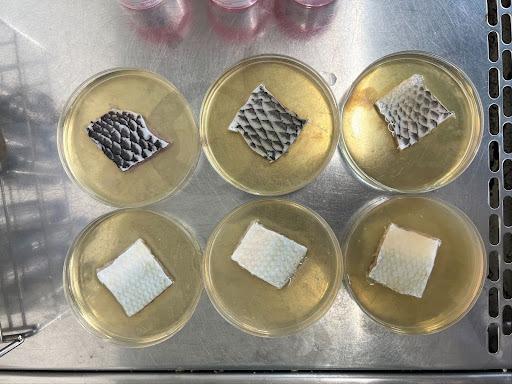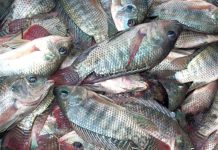If Brazil has done it with tilapia skin, the Philippines is following suit by using the skin of bangus or milkfish, the country’s fish icon. Both tilapia (scientific name: Oreochromis niloticus) and bangus (Chanos chanos) are raised in the country.
Researchers from the Ateneo de Manila University (ADMU) have found that bangus skin could be used to make artificial skin for helping severe burn victims and other badly-injured patients.
“The Ateneo scientists found that milkfish could give doctors an economical way to treat patients with massive burns and other major injuries,” said the report which was circulated to the media.
Wound dressings derived from fish skin, although not intended as a home remedy, may emerge as a crucial and economical resource for doctors in developing nations such as the Philippines.
Research indicates that fish skin possesses anti-inflammatory and antibacterial properties that enhance the healing process for various types of wounds, including diabetic foot ulcers and burns.
“Wound healing poses a great challenge for both healthcare providers and patients and at the same time, the treatment is extremely costly,” observes Arlene Dedeles, a Filipino nurse now working in the United States.
According to Ateneo scientists, when a person’s skin is severely damaged—such as in a large third-degree burn, where all skin layers are affected—doctors may dress the wound with an artificial skin to protect exposed tissues and to promote the healthy growth of the patient’s own skin cells.
This groundbreaking Ateneo study is the first time that bangus skin has been eyed for this purpose, whereas previous studies have used tilapia. The result of the study was published on the BIO Web of Conferences in November last year.
The paper, “Determining the Applicability of Milkfish (Chanos chanos) for Skin Grafting through Microbiological and Histological Evaluations,” was authored by Dr. Janice Ragaza and Bianca Patrice Go of the ADMU School of Science and Engineering Department of Biology’s Aquatic and Fisheries Resources Laboratory.
The breakthrough is good news for health professionals.
“As bangus is commonly raised and sold all across the Philippines, this research holds major implications for healthcare in the country: it offers the possibility of an affordable and sustainable wound care method that also potentially reduces reliance on imported medical materials,” the report stated.
The fish skin is a common byproduct of the Philippine fishing industry, often discarded as waste. By using it as dressing, the Ateneo research also promotes environmental sustainability.
“Among the economically significant fish species in the Philippines, bangus is one of the most widely cultivated. However, limited research has been conducted on the suitability of milkfish skin for wound care,” the researchers said in their paper.
“Given its abundance and potential collagen content, milkfish skin presents a valuable opportunity to expand the donor pool for fish skin grafting,” they added.
The Ateneo scientists conducted a comparative analysis of bangus and tilapia skins obtained from a local market in Metro Manila, ensuring that the samples were fresh and devoid of impurities. The skins underwent a descaling process, were rinsed in saltwater, and were subsequently cut into uniform strips.
A portion of the fish skin samples was sterilized using a solution of silver nanoparticles (AgNP), while the untreated skins were utilized as control samples.
Result of the study showed the bangus samples treated with AgNP exhibited a consistent and complete inhibition of both bacterial and fungal growth. Furthermore, microscopic examination indicated that the structural integrity of collagen in bangus skin was maintained comparably to that of tilapia skin.
“By demonstrating that milkfish skin can be effectively sterilized and used similarly to tilapia skin, this research provides innovative, cost-effective, and sustainable wound-healing solutions. This finding has the potential to transform wound care in underserved areas, improving patient outcomes in regions with limited access to advanced medical facilities,” the paper concluded.
The groundbreaking research is also good news for bangus raisers. For a very long time, the Philippine aquaculture industry was virtually synonymous with bangus culture as it was introduced into the country 400 to 600 years ago.
“The backbone of Philippine aquaculture” is how bangus farming has been regarded by most fishery experts. However, it was only in recent years that significant growth of the industry was realized.
Today, the Philippines is one of the top bangus producers in the world, along with Indonesia and Taiwan. “Until recently, the country has contributed around 55% share of the world’s bangus production,” said Dr. Rafael D. Guerrero III, who once headed the Philippine Council for Aquatic and Marine Research and Development (PCAMRD).
In 2023, bangus was the second most produced aquaculture commodity after seaweed, with 355,426 metric tons, according to Philippine Statistics Authority (PSA). Its contribution to the country’s gross domestic product was P45.6 billion, making it the highest in the aquaculture sector.
Bangus can be raised in all regions of the country, except for the landlocked Cordillera Administrative Region. In 2023, the Philippine Statistics Authority (PSA) reported the top producing regions are Ilocos (143,434 metric tons), Central Luzon (68,395 metric tons), Western Visayas (58,973 metric tons), Calabarzon (32,224 metric tons), and Davao (19,645 metric tons).
The top producing provinces, however, are Pangasinan (138.7 metric tons), Capiz (49.9 metric tons), Pampanga (29.9 metric tons), Bulacan (28.4 metric tons), and Quezon (18.3 metric tons).
Bangus serves as a significant source of income for coastal residents, playing an essential role in the fishing industry and bolstering the local economy.
“About 10% of the 36.8 kilogram of annual fish consumed by an average Filipino household is milkfish. In terms of market and trade, milkfish is one of the largest volumes of fish merchandized every day in almost all public markets,” says the Philippine Milkfish Industry Roadmap (2021-2040).







